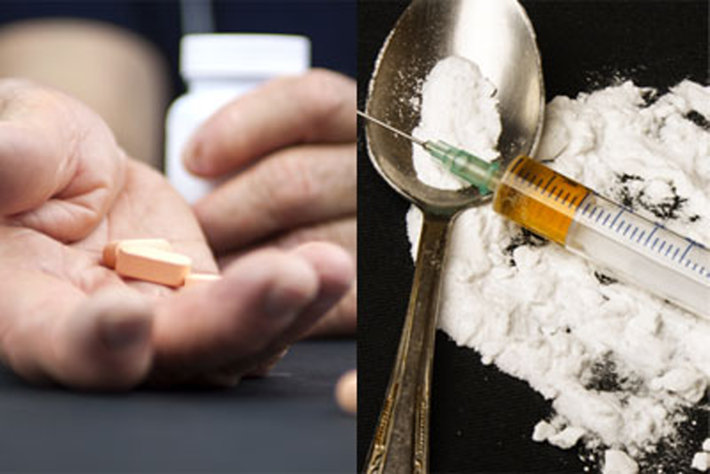Addiction to Opiates Fuels Flood of Heroin

Prescription Painkillers Now Serving as “Gateway” Drug
An older street drug is making a market resurgence, thanks in large part to the widespread popularity of newer drugs, according to the Journal Gazette out of Fort Wayne, Indiana. The local newspaper in this city of 255,000 recently ran a report which focused on the fact that law enforcement and public health officials in the area are noticing that the rates of heroin trafficking, use, and addiction are all on the increase, and they attribute this fact to the explosion in prescription painkiller abuse over the past several years.
There have been a number of record-setting drug busts involving heroin in the past few months in Fort Wayne, in addition to many arrests for individual possession or drug dealing. A captain of the local police department is quoted as saying that there has been a steady increase in the rate of heroin seizures, with the total amount of the drug being caught per year reaching 43.2 grams in 2009, 96.4 grams in 2010, 108.1 grams in 2011 and 123.9 grams in 2012.
The growing prevalence of heroin in Fort Wayne and many other parts of the country is recognized as being a result of the massive increase in the rates of painkiller medication prescriptions, as well as the subsequent epidemic of painkiller abuse. Whereas opiate painkillers were formerly reserved almost exclusively for severe cases such as cancer patients and the terminally ill—whose brief life expectancy was considered to outweigh the risks of developing an addiction—they are now being given to people with more routine pain such as back pain or headaches. In fact, Vicodin is now the number-one prescription drug of any type in the country. Astonishing numbers of patients become addicted to painkillers, with 12 million engaging in the nonmedical use of painkillers in 2010, and approximately 2 million getting started on the nonmedical use of the drug in that year alone. Painkillers including Vicodin, OxyContin, and Opana are now second only to marijuana for the prevalence of drug abuse, and as a result more than 15,000 people now die of painkiller overdose on a yearly basis—a figure which is greater than both cocaine and heroin combined.
Opiate Painkillers And Heroin Are Cousins
In response to such alarming trends, law enforcement agencies, public health officials, doctors, pharmacies and the general public are all becoming more aware of the dangers of opiate painkillers, and many are taking action to cut down on the rates of nonmedical use. This has meant that painkillers are becoming more difficult to obtain, with the result that patients and others who have become addicted are desperately looking for alternatives.
Opiate withdrawals are notorious for being among the worst type of drug withdrawal, so it should not be surprising to see the lengths to which the addicts are going to get their next high. A large number of them are stooping to the level of buying street drugs from drug dealers, with heroin being the most suitable replacement for painkillers. The reason that heroin is a highly sought-after substitute has to do with the common origin of morphine—which is used to make heroin—and codeine—the basis for hydrocodone (Vicodin) and oxycodone (Oxycontin). Both are derived from the opium extracted from the poppy flower, and they, therefore, share many of the same properties.
A painkiller addict often encounters little trouble in finding heroin and will typically discover that it is cheaper. This is a serious problem for the community of Fort Wayne and for towns and cities across the United States since opiate painkillers are currently being prescribed in massive quantities to people from every stratum of society. We have on our hands the potential for an enormous wave of drug addiction, whether the people stay on their painkillers or if—as is increasingly common—they end up turning to heroin.
Sources:

 ®
®